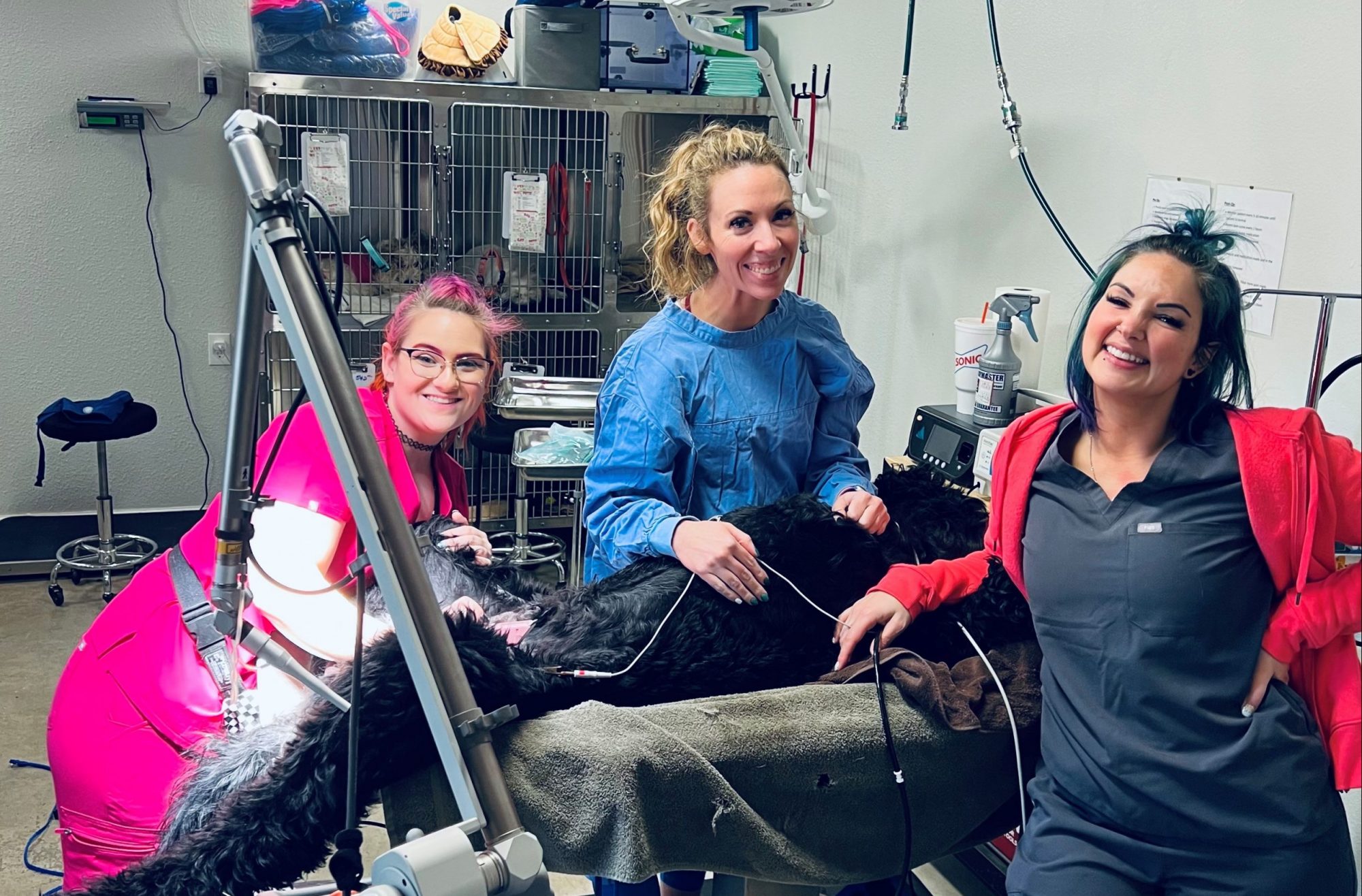The Advantages of Pet Laser Surgery

Veterinary medicine has a long and fascinating history. Research suggests that around 9,000 BC, shepherds in the Middle East applied basic medical skills to both livestock and sheep dogs. Ancient Egyptians commonly treated their animals in their care, and our knowledge and understanding continued when we domesticated the first generations of cats and dogs. The modern era of pet ownership now includes grooming, dental care, numerous advanced diagnostics, alternative treatments, and cutting edge techniques like pet laser surgery.
An Incredible Alternative
While traditional veterinary surgery has never been safer or more effective, it is important to know that there is a great alternative for various soft tissue surgeries. Pet laser surgery has many great advantages that make it a viable choice over conventional cutting techniques.
Less Pain, Less Blood
Instead of scalpels made of stainless steel, pet laser surgery applies light energy at a certain wavelength onto an incision site. Water-rich skin tissue absorbs the laser’s infrared energy, and vaporizes the cells. The result is the opening or cutting of the skin and tissue. Pet laser surgery seals nerve endings, closes nearby blood vessels, and minimizes how much blood gathers at the incision.
Cuts Like a Laser, Not a Knife
With incredible accuracy, we can control exactly where the laser lands. In a procedure with tight margins, we can reduce potential damage to the major organs, small blood vessels, and nerves. Most importantly, because of the precision of pet laser surgery, animals have a shorter recovery period, experience less pain and inflammation, and don’t face infection risks because the tissue is sterilized by the CO2 laser.
When to Consider Pet Laser Surgery
If pet owners prefer, pet laser surgery can be used during routine spays and neuters, and almost any soft-tissue surgery. With less blood to obscure the area, we have increased visibility when operating on the eyes, ears, nose, mouth, and skin. The CO2 laser can be used on either external or internal problems, including tumor or cysts on the skin or on the organs.
All The Pieces of the Puzzle
Both traditional veterinary surgery and pet laser surgery are incredibly valuable to treat injuries, treat disease, and maintain health. Pet laser surgery can be a quicker process, and pets experience less time under general anesthesia for their procedure.
Pet laser surgery does not result in excessive bleeding, bruising, or swelling. Also, with a reduced chance of infection, recovery time is much faster.
While pet laser surgery can cost a little more than traditional surgery methods, you might save on anesthesia medications, hospital time, pain relief, and more.
Experience the Alternative
Veterinary medicine continues to evolve, and we’re so excited to offer different services that are on the cutting edge. If you have questions about pet laser surgery, or concerns about the process, please give us a call at (817) 733‑3011. The Vet Gal and Guys are always happy to help you!



